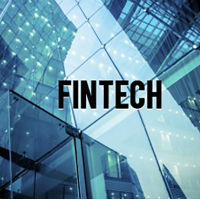Ripple is making blockchain waves
| 23-03-2018 | Carlo de Meijer |
 Almost a year ago I wrote my blog “Blockchain and the Ripple effect: did it Ripple?”. Now twelve months later we may conclude it did. And even more than that. Ripple is making many waves. A lot happened both in broadening their offerings and in enlarging their network. A growing number of banks and payment providers, increasingly join RippleNet, Ripple’s decentralized global network, to “process cross-border payments efficiently in real time with end-to-end tracking and certainty”. By using the growing set of Ripple solutions they are able to expand payments offerings into new markets that are otherwise too difficult or too expensive to reach. The focus of Ripple therefor has especially moved towards emerging markets.
Almost a year ago I wrote my blog “Blockchain and the Ripple effect: did it Ripple?”. Now twelve months later we may conclude it did. And even more than that. Ripple is making many waves. A lot happened both in broadening their offerings and in enlarging their network. A growing number of banks and payment providers, increasingly join RippleNet, Ripple’s decentralized global network, to “process cross-border payments efficiently in real time with end-to-end tracking and certainty”. By using the growing set of Ripple solutions they are able to expand payments offerings into new markets that are otherwise too difficult or too expensive to reach. The focus of Ripple therefor has especially moved towards emerging markets.
BROADENING RIPPLE OFFERINGS
Ripple was set up in 2012 to create a streamlined, decentralized global payments system named RippleNet, using technology inspired by the blockchain, to record transactions between banks. RippleNet is an enterprise-grade blockchain platform, that nowadays has over 100-member banks and financial institutions. These partners can use all the Ripple offerings.
Solutions
Ripple makes software products based on blockchain technology and sell them to banks, payment providers and others to be used on RippleNet. These are aimed to make cross border payments truly efficient for these players and their customers. Next to their digital asset XRP, the XRP Ledger, and xCurrent, that helps banks settle transactions, Ripple has added a number of new services/offerings to the platform including xRapid and xVia. This in order to attract more clients to enter RippleNet. Ripple is now taking the next step to help build the Internet of Value (IoV), by establishing an Infrastructure Innovation Initiative.
a. XRP: digital asset
From the outset, XRP, Ripple’s digital asset was expected to be an important part of Ripple’s decentralised payment system. Ripple uses its own XRP cryptocurrency as a payment method to make it easier for banks to move money internationally. Banks and payment providers can use Ripple’s digital asset XRP to further reduce their costs and access new markets. One rationale for using XRP is that unlike Bitcoin, the token has one narrowly defined (payments method!) but clearly useful purpose: to help banks move cash faster and more cheaply, especially across borders. The token could be used as a kind bridge currency between fiat currencies. For example South African rands in Johannesburg could become XRP, which could then be turned into baht in Thailand. That could help banks avoid the time consuming and expense of tying up money in different currencies in accounts at other banks.
b. xCurrent: processing payments
RippleNet is powered by xCurrent, for payment processing. xCurrent is the new name of Ripple’s existing enterprise software solution that enables banks to instantly settle cross-border payments with end-to-end tracking (and bidirectional messaging across RippleNet). It provides real-time messaging, clearing and settlement of financial transactions. The xCurrent messaging platform however does not involve XRP. It includes a Rulebook developed in partnership with the RippleNet Advisory Board to standardise all transactions across the network. That ensures operational consistency and legal clarity for every transaction. The Interledger Protocol (ILP) is the backbone of the solution and makes it possible for instant payments to be sent across a variety of different networks.
Read the full article of our expert Carlo de Meijer on LinkedIn

Economist and researcher









